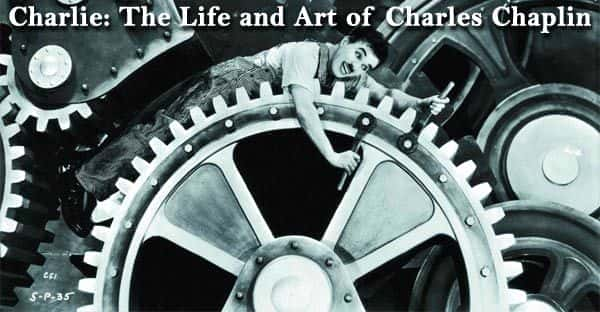|
|

外语原版纪录片《 Charlie: The Life and Art of Charles Chaplin 》 - 纪录片1080P/720P/360P高清标清网盘迅雷下载
Charlie: The Life and Art of Charles Chaplin
纪录片关键词:
Charlie: The Life and Art of Charles Chaplin,Mark Steel Lectures: Series 1 to 3,Masters of Photography - Edward Steichen,Talking Pictures: Great British Comedies,The Circus,Time Traveling with Brian Unger,JumpinS,2003,Biography,English,Others
Biography,Sydney Pollack,Others,2003,English
纪录片内容简介:
General Information:
Biography Documentary hosted by Sydney Pollack and published by Others in 2003- English narration
Information
"Charlie: The Life and Art of Charles Chaplin" attempts to present the man's warts and errors, as well as the film and comic genius, in 131 minutes. Although one suspects it would be impossible to do this completely in anything less than six hours, "Charlie" does an excellent and absorbing job.
The film doubles back to some pertinent details from childhood and tacks on clips from home movies shot in Switzerland and on vacation in Africa by a daughter in the 1960s and '70s (charming but of negligible interest and value). It also notes the honors bestowed at Cannes and the Academy Awards late in his life. But its primary arc goes from 1914, when Chaplin began acting in Mack Sennett comedies as a contract player two years after arriving in the U.S. on the vaudeville circuit, to 1952 with the release of "Limelight" and the family's permanent exile to Europe.
The central conceit of Schickel's take is Chaplin's love-hate (though mostly love) relationship with the public. Hunger for the crowd, and fear of the crowd, drove his life, according to friend and "Limelight" costar Norman Lloyd. Chaplin grew rich playing the poorest of men, and spoke with embarrassing fervency on behalf of the common man in the final speech of "The Great Dictator," yet also talked of the headless unpredictability of the mob in "Limelight." Apart from the intermittent messes of his personal life, Chaplin did a creditable job of fighting to keep his artistic integrity and humanity in the face of superstardom and mass adulation, his son Michael argues.
"Charlie" spends time analyzing the quasi-tramp figure's first appearance in the entirely improvised and nearly plotless "Kid Auto Races at Venice" (1914); offers examples of innovative camerawork, plotting, and gag design in his Essenay and Mutual shorts; and notes the subject's startling ability to transform one object into something totally different (for example, a plant leaf into a toothbrush, or a fire engine into a cappuccino machine).
As "Charlie" is not shy to indicate, Chaplin had difficulties (serious ones) with women, government agencies, and eventually his public. It mentions the child brides, the ghastly Lita Grey divorce that halted shooting on "The Circus" for 9 months and created an underground bestseller of the lurid 42-page complaint detailing Chaplin's infidelities and irregular sex practices. Joan Barry's armed break-in and subsequent paternity suit (which a blood test, legally inadmissible at that time, showed was groundless, but Chaplin lost in court anyway and dutifully paid child support for a kid that evidently wasn't his) also gets a mention.
One of this documentary's greatest strengths is the extra attention it gives to the lesser known and more prickly works of Chaplin's oeuvre: "A Woman of Paris" and "Monsieur Verdoux," both of which it spends more time on than "The Gold Rush" or "City Lights." Scorsese is especially generous and useful here. He praises the decadence and eroticism of "Woman," and says "There's a calmness about it that's terrifying. . . . You know it's all gonna go bad." He describes a favorite shot or two of "Verdoux," praises its depiction of "eloquent and elegant and absolutely horrendous behavior," and almost cackles as he tries to imagine how its initial viewers reacted to it. "No one liked it! It's a beautiful, but it's also a very ugly film." According to Scorsese, its implicit challenge seems to be: "how far can I push you and you'll still love me?"
"Charlie" includes some vaunted unseen and/or unreleased material rehearsals and outtakes for famous scenes, an Oona O'Neill Chaplin screen test, color footage of the giant World War I cannon and closing rally sequences from "The Great Dictator" shot by a family member, newsreel clips of Chaplin on vacation in Hawaii and Asia with Paulette Goddard, the aforementioned home videos from his golden years, and a party video of Chaplin in a toga, juggling a globe in an anticipation of the "Dictator" globe dance, but none of them is particularly vital or memorable. The film's true strengths are its writing and analysis, its cast of guest commentators, and the classic clips that inevitably inspire awe.
Technical Specs
Source: 2003 DVD rip
Video: XVID, 512x384, 25.00fps, 1241Kbps
Audio: MP3, 48KHz, stereo, 128Kbps
Part 1: 682MB, 58 minutes
Part 2: 679MB, 69 minutes
Subtitles: English, Dutch, Spanish, French, Italian, Russian, Portuguese, Polish, Turkish, Greek...
Ripped by: AEN
~~~~~~~~~~~~~~~~~~~~~~~~~~~~~~~~~~~~~~~~~~
外语原版纪录片《 Charlie: The Life and Art of Charles Chaplin 》 - 纪录片1080P/720P/360P高清标清网盘迅雷下载
下载地址:
(本链接可能为BT下载方式,需自备BT类下载工具。推荐使用115网盘离线下载,或使用其他具有离线下载功能的网盘)
游客 文件下载链接就在这里,在您回复评论成功后才能显示。
请勿回复无意义的灌水内容。下拉页面到最底部回复或者 【点击此处快捷回复】,回复后返回此处即可查看下载链接。 如您没注册本站会员,可以点击 注册本站,注册后即可回复下载。 |
小贴士:【影视自媒体解说文案请移步:夏至文案解说网 www.xiazhi.vip】上一篇:外语原版纪录片《 El Che Clandestino en Buenos Aires 》 - 纪录片1080P/720P/360P高清标清网盘迅雷下载下一篇:外语原版纪录片《 Che Guevara - The Body and the Legend 》 - 纪录片1080P/720P/360P高清标清网盘迅雷下载
|